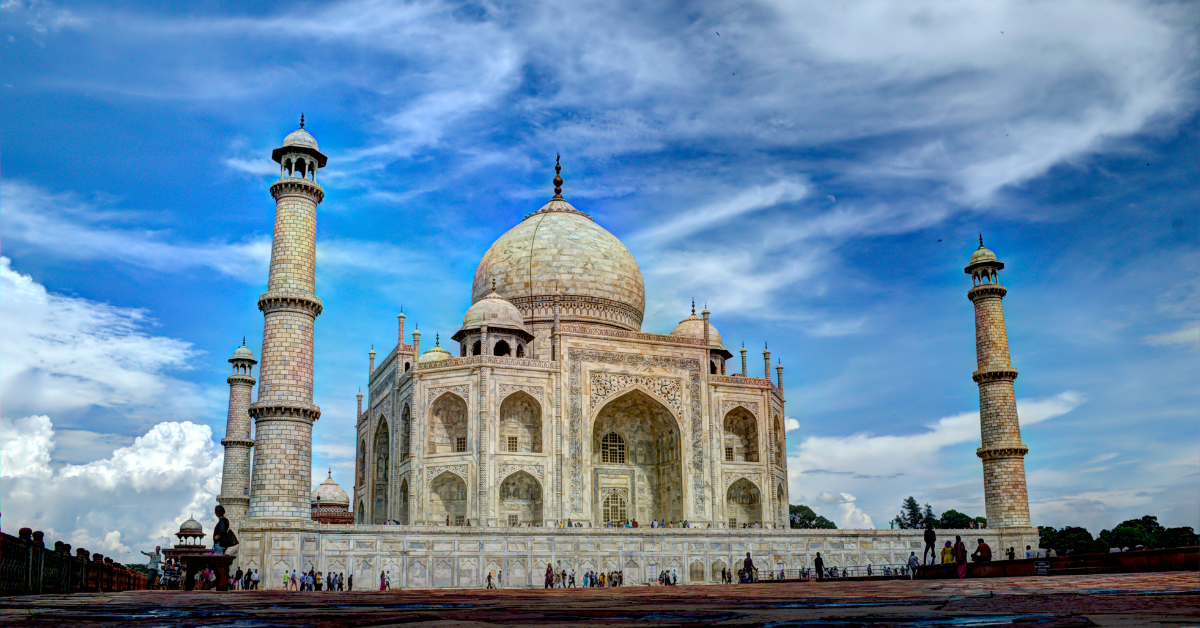Known as “the world’s most famous monument of love,” the Taj Mahal resonates deeply with Japanese visitors. They are astonished by its grandeur while also connecting with the profound emotions behind its creation.
Historical Background of the Taj Mahal
The Taj Mahal was built by Mughal Emperor Shah Jahan in memory of his beloved wife Mumtaz Mahal. Completed in the mid-17th century, it is recognized as a UNESCO World Heritage Site and is considered the finest example of Islamic architecture. For Japanese visitors, it is often something they have heard about in history classes or seen in world history materials. However, when they finally visit in person, they experience a sense of scale and atmosphere that photos or videos cannot convey.
First Impressions of Japanese Visitors
The most common reaction Japanese travelers express is “It’s more beautiful than I imagined.” The harmony of the design, the symmetry, and the glowing marble at sunrise or sunset leave a deep impression.
| Impression | Example of a Japanese Comment |
|---|---|
| Surprise at beauty | “It was far more overwhelming than in photos.” |
| Serenity and solemnity | “It felt like stepping into a sacred space.” |
| Value as a World Heritage Site | “I was impressed by how well-preserved it is.” |
Elements That Deepen the Emotional Impact
Japanese impressions are shaped not only by the building itself but also by the gardens and waterways surrounding the Taj Mahal. These are often compared to Japanese garden culture, allowing travelers to experience a very different sense of beauty.
| Element | Japanese Impressions |
|---|---|
| Marble decorations | “The appearance changes with the light.” |
| Garden layout | “The symmetry feels refreshing compared to Japanese gardens.” |
| Atmosphere of silence | “It felt as if I had stepped away from the chaos of the city.” |
Comparison with Other World Heritage Sites
Japanese visitors often compare the Taj Mahal with famous heritage sites in Japan, such as Kiyomizu-dera in Kyoto or Todaiji in Nara. This comparison highlights cultural contrasts and provides new ways to appreciate beauty.
| World Heritage Site | Difference Felt by Japanese Travelers |
|---|---|
| Kiyomizu-dera | Wooden warmth contrasts with the Taj Mahal’s cold yet refined beauty |
| Todaiji | The Great Buddha’s power versus the Taj Mahal’s delicate elegance |
| Himeji Castle | Both are white, but the meanings are completely different |
Common Themes in Japanese Travel Experiences
When analyzing travel stories, many Japanese conclude that the Taj Mahal is “a place worth visiting at least once in a lifetime.” They also note that their perspective on Indian culture expanded before and after the visit.
| Common Sentiment | Example Expression |
|---|---|
| Losing track of time | “I just wanted to keep gazing at it.” |
| Beyond photographs | “The real scale and atmosphere were incomparable.” |
| Value as a symbol of love | “I felt it was truly a monument to human devotion.” |
Recommendations for Foreign Visitors
Based on Japanese impressions, here are the points most worth recommending to foreign travelers.
| Recommendation | Reason |
|---|---|
| Glow of white marble | The appearance shifts with light, offering different views throughout the day |
| Garden tranquility | Provides a healing contrast to the city’s noise |
| Historical background | Visitors can experience the grand story of love and power intertwined |
Conclusion
Japanese impressions of the Taj Mahal can be summarized in three main points: “awe at its beauty,” “respect for its history,” and “learning through cultural contrast.” The atmosphere of the site conveys an emotional experience that no photo or video can capture. Viewing the Taj Mahal through Japanese perspectives allows foreign visitors to gain a new layer of understanding and appreciation.






